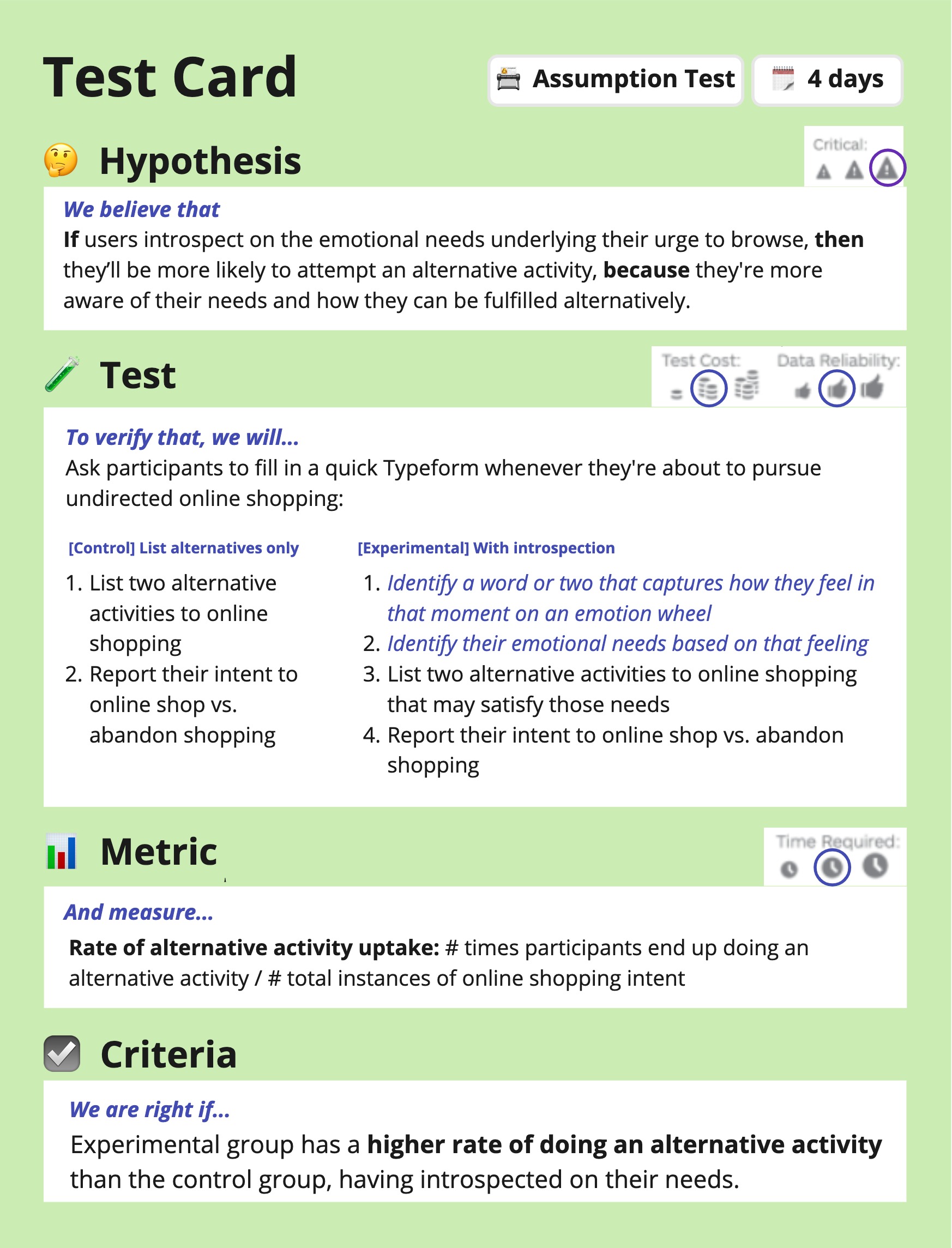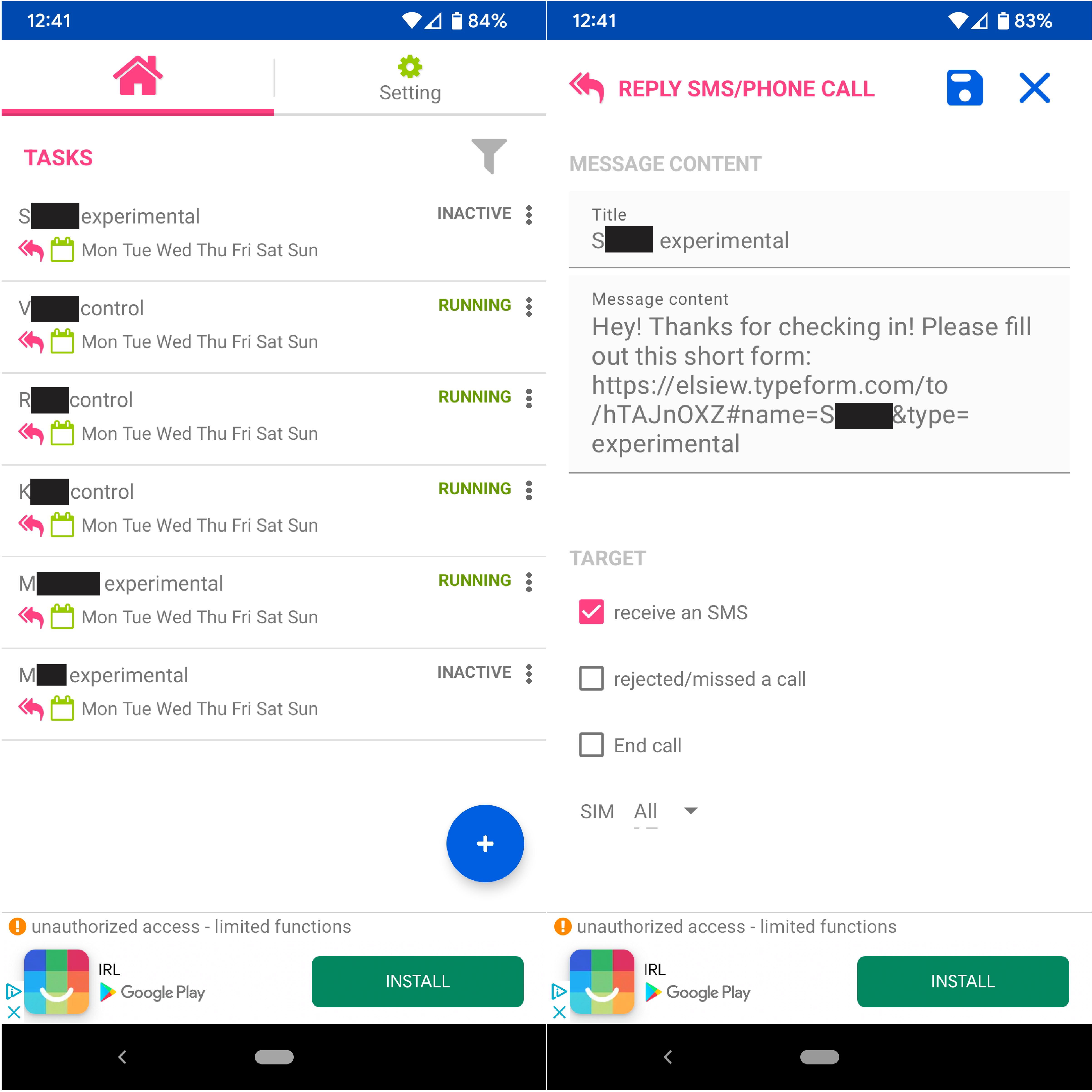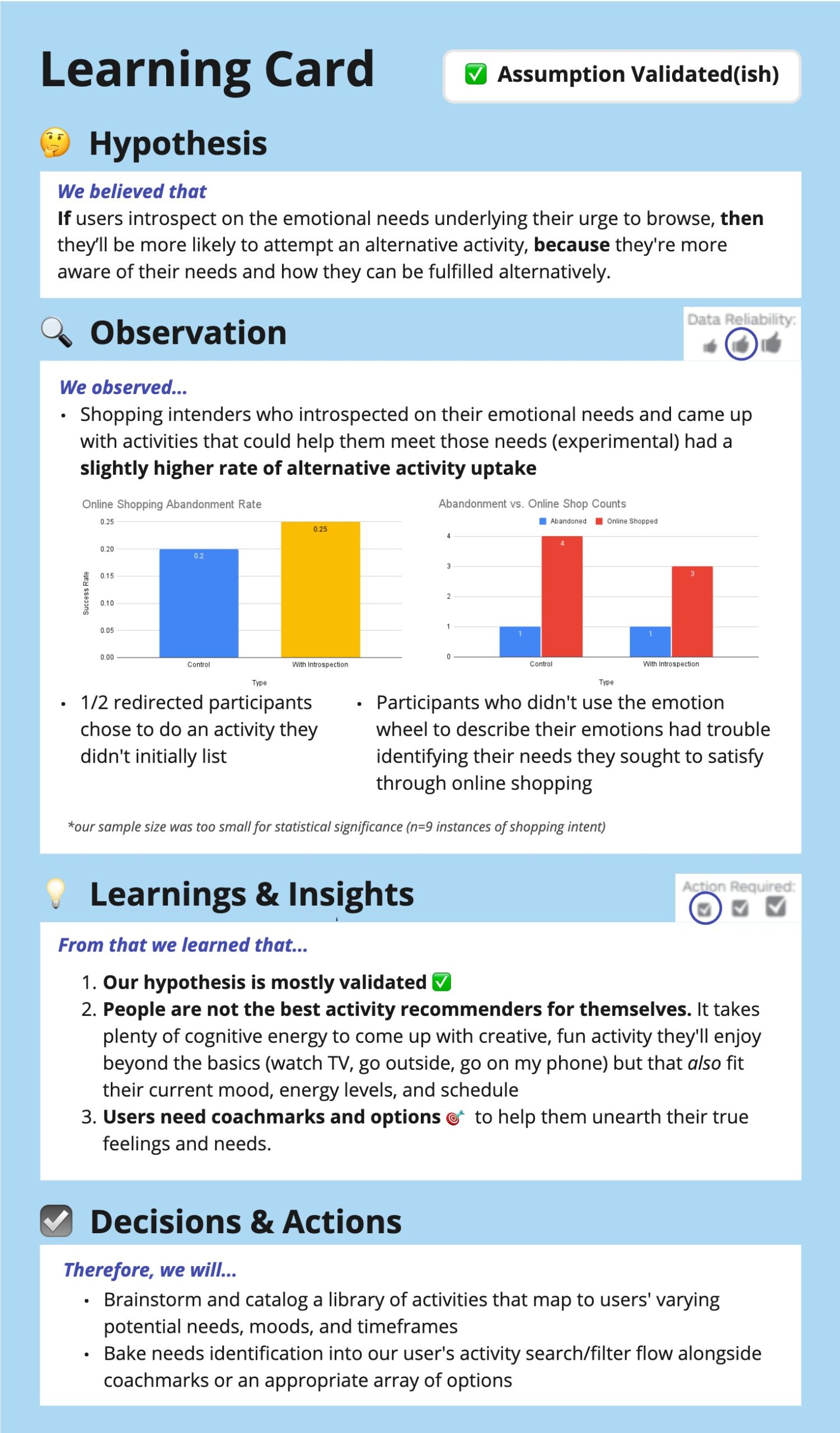Our intervention strategy is to redirect users to a substitute activity when they find themselves beginning to online shop. From literature research, we learned that there is often an emotional need underlying users’ online shopping behavior, e.g., relieving stress and anxiety or avoiding negative emotions. To leverage this insight, we were curious to learn:
If users introspect on the emotional needs underlying their urge to browse, will they be more likely to attempt a substitute activity, because they’re more aware of their needs and how they can be fulfilled alternatively?
📐 Assumption Test Design

Note: each participant may undergo both experimental and control trials – each instance of online shopping intent is treated as one trial. For more details of our study design, please see this doc.
📜 Study Artifacts
Typeform Flows

Text Autoresponder
To operationalize our study, we wanted to prompt users with the Typeform in the lowest-friction way possible. To this end, we asked users to text a “bot” whenever they felt an urge to online shop, which will send them the correct Typeform link fill out (either the control or experimental version). The “bot” is set up by a third-party app “Auto Message” that auto-replies to each participant with a custom message.

🧑🤝🧑 Who we recruited and why
Together, we recruited X participants that were either a great encapsulation of Spencer the Spender or at the least slightly adjacent in terms of online shopping frequency and attitudes (associate with downtime, views as a form of entertainment):
- Participant V – a 23-year-old student passionate about sustainable fashion; she’s a frequent patron of sustainable brands and is often reminded to shop by social ads. One primary reason we recruited them was because of how frequently they shopped – ensuring we would get data to work with.
- Participant M1 – a 20-year-old undergrad who loves staying on-trend. She’s a compulsive shopper who’s often mindlessly browsing her favorite apparel sites, yet desperately wants to change her online shopping habits because her online shopping is draining her bank account. All her friends similarly follow trends and consume fast fashion, so it’s easy to rationalize her actions as normal, even though she later feels that they’re not
- Participant M2 – a woman in her 40s who reported regretting 10-30% of purchases spent in the past month. She reported an ideal budget of $100 but spent about $500 in the past month. Because of her motivation to reduce online spending, we thought she would be a good candidate for our study.
- Participant S – a 29-year-old tech professional who browses daily and regrets 15% of purchases made in the past month.
- Participant K – a 28-year-old working professional who recently went back to school and online shops about once per week. She reports spending about $800 in the past month, despite an ideal monthly budget of $50
✨ Main Learnings




